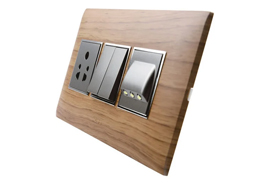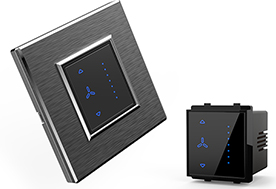This is a demo store. No orders will be fulfilled.
Category 3
-
June 14, 2024The tag <p> defines a paragraph. Browsers automatically add some space (margin) before and after each <p> element. The margins can be modified with CSS (with the margin properties). The tag <p> defines a paragraph. Browsers automatically add some space (margin) before and after each <p> element. The margins can be modified with CSS (with the margin properties). The tag <p> defines a paragraph.
-
June 11, 2024The tag <p> defines a paragraph. Browsers automatically add some space (margin) before and after each <p> element. The margins can be modified with CSS (with the margin properties). The tag <p> defines a paragraph. Browsers automatically add some space (margin) before and after each <p> element. The margins can be modified with CSS (with the margin properties). The tag <p> defines a paragraph.
-
June 08, 2024The tag <p> defines a paragraph. Browsers automatically add some space (margin) before and after each <p> element. The margins can be modified with CSS (with the margin properties). The tag <p> defines a paragraph. Browsers automatically add some space (margin) before and after each <p> element. The margins can be modified with CSS (with the margin properties). The tag <p> defines a paragraph.
-
June 02, 2024The tag <p> defines a paragraph. Browsers automatically add some space (margin) before and after each <p> element. The margins can be modified with CSS (with the margin properties). The tag <p> defines a paragraph. Browsers automatically add some space (margin) before and after each <p> element. The margins can be modified with CSS (with the margin properties). The tag <p> defines a paragraph.
-
May 21, 2024
The tag <p> defines a paragraph. Browsers automatically add some space (margin) before and after each <p> element. The margins can be modified with CSS (with the margin properties). The tag <p> defines a paragraph. Browsers automatically add some space (margin) before and after each <p> element. The margins can be modified with CSS (with the margin properties). The tag <p> defines a paragraph. Browsers automatically add some space (margin) before and after each <p> element. The margins can be modified with CSS (with the margin properties).The tag <p> defines a paragraph. Browsers automatically add some space (margin) before and after each <p> element. The margins can be modified with CSS (with the margin properties). The tag <p> defines a paragraph. Browsers automatically add some space (margin) before and after each <p> element. The margins can be modified with CSS (with the margin properties). The tag <p> defines a paragraph. Browsers automatically add some space (margin) before and after each <p> element. The margins can be modified with CSS (with the margin properties).
-
May 18, 2024
The tag <p> defines a paragraph. Browsers automatically add some space (margin) before and after each <p> element. The margins can be modified with CSS (with the margin properties). The tag <p> defines a paragraph. Browsers automatically add some space (margin) before and after each <p> element. The margins can be modified with CSS (with the margin properties). The tag <p> defines a paragraph. Browsers automatically add some space (margin) before and after each <p> element. The margins can be modified with CSS (with the margin properties).The tag <p> defines a paragraph. Browsers automatically add some space (margin) before and after each <p> element. The margins can be modified with CSS (with the margin properties). The tag <p> defines a paragraph. Browsers automatically add some space (margin) before and after each <p> element. The margins can be modified with CSS (with the margin properties). The tag <p> defines a paragraph. Browsers automatically add some space (margin) before and after each <p> element. The margins can be modified with CSS (with the margin properties).
-
May 06, 2024
The tag <p> defines a paragraph. Browsers automatically add some space (margin) before and after each <p> element. The margins can be modified with CSS (with the margin properties). The tag <p> defines a paragraph. Browsers automatically add some space (margin) before and after each <p> element. The margins can be modified with CSS (with the margin properties). The tag <p> defines a paragraph. Browsers automatically add some space (margin) before and after each <p> element. The margins can be modified with CSS (with the margin properties).The tag <p> defines a paragraph. Browsers automatically add some space (margin) before and after each <p> element. The margins can be modified with CSS (with the margin properties). The tag <p> defines a paragraph. Browsers automatically add some space (margin) before and after each <p> element. The margins can be modified with CSS (with the margin properties). The tag <p> defines a paragraph. Browsers automatically add some space (margin) before and after each <p> element. The margins can be modified with CSS (with the margin properties).
-
May 03, 2024
The tag <p> defines a paragraph. Browsers automatically add some space (margin) before and after each <p> element. The margins can be modified with CSS (with the margin properties). The tag <p> defines a paragraph. Browsers automatically add some space (margin) before and after each <p> element. The margins can be modified with CSS (with the margin properties). The tag <p> defines a paragraph. Browsers automatically add some space (margin) before and after each <p> element. The margins can be modified with CSS (with the margin properties).The tag <p> defines a paragraph. Browsers automatically add some space (margin) before and after each <p> element. The margins can be modified with CSS (with the margin properties). The tag <p> defines a paragraph. Browsers automatically add some space (margin) before and after each <p> element. The margins can be modified with CSS (with the margin properties). The tag <p> defines a paragraph. Browsers automatically add some space (margin) before and after each <p> element. The margins can be modified with CSS (with the margin properties).
-
April 27, 2024
The tag <p> defines a paragraph. Browsers automatically add some space (margin) before and after each <p> element. The margins can be modified with CSS (with the margin properties). The tag <p> defines a paragraph. Browsers automatically add some space (margin) before and after each <p> element. The margins can be modified with CSS (with the margin properties). The tag <p> defines a paragraph. Browsers automatically add some space (margin) before and after each <p> element. The margins can be modified with CSS (with the margin properties).The tag <p> defines a paragraph. Browsers automatically add some space (margin) before and after each <p> element. The margins can be modified with CSS (with the margin properties). The tag <p> defines a paragraph. Browsers automatically add some space (margin) before and after each <p> element. The margins can be modified with CSS (with the margin properties). The tag <p> defines a paragraph. Browsers automatically add some space (margin) before and after each <p> element. The margins can be modified with CSS (with the margin properties).
-
April 21, 2024
The tag <p> defines a paragraph. Browsers automatically add some space (margin) before and after each <p> element. The margins can be modified with CSS (with the margin properties). The tag <p> defines a paragraph. Browsers automatically add some space (margin) before and after each <p> element. The margins can be modified with CSS (with the margin properties). The tag <p> defines a paragraph. Browsers automatically add some space (margin) before and after each <p> element. The margins can be modified with CSS (with the margin properties).The tag <p> defines a paragraph. Browsers automatically add some space (margin) before and after each <p> element. The margins can be modified with CSS (with the margin properties). The tag <p> defines a paragraph. Browsers automatically add some space (margin) before and after each <p> element. The margins can be modified with CSS (with the margin properties). The tag <p> defines a paragraph. Browsers automatically add some space (margin) before and after each <p> element. The margins can be modified with CSS (with the margin properties).




